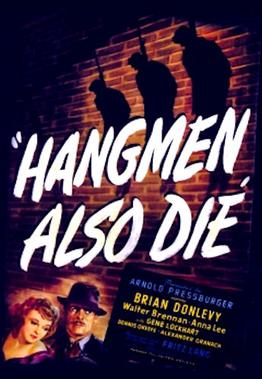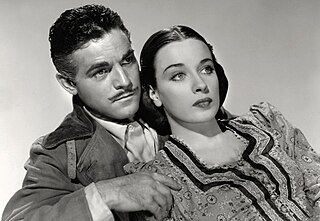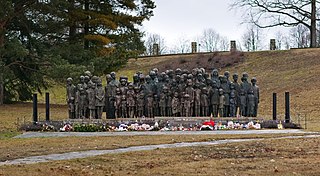
Reinhard Tristan Eugen Heydrich was a high-ranking German SS and police official during the Nazi era and a principal architect of the Holocaust.

The Lidice massacre was the complete destruction of the village of Lidice in the Protectorate of Bohemia and Moravia, which is now a part of the Czech Republic, in June 1942 on orders from Nazi leader Adolf Hitler and acting Reichsprotektor Kurt Daluege, successor to Reinhard Heydrich. It has gained historical attention as one of the most documented instances of German war crimes during the Second World War, particularly given the deliberate killing of children.

Reinhard Heydrich, the commander of the German Reich Security Main Office (RSHA), the acting governor of the Protectorate of Bohemia and Moravia and a principal architect of the Holocaust, was assassinated during the Second World War in a coordinated operation by the Czechoslovak resistance. The assassination attempt, code-named Operation Anthropoid, was carried out by resistance operatives Jozef Gabčík and Jan Kubiš on 27 May 1942. Heydrich was wounded in the attack and died of his wounds on 4 June 1942.

Ystradgynlais is a town on the River Tawe in southwest Powys, Wales. It is the second-largest town in Powys and is in the historic county of Brecknockshire. The town has a high proportion of Welsh language-speakers. The community includes Cwmtwrch, Abercraf and Cwmgiedd, with a population of 8,092 in the 2011 census. It forms part of the Swansea Urban Area where the Ystradgynlais subdivision has a population of 10,248.

Hangmen Also Die! is a 1943 noir war film directed by the Austrian director Fritz Lang and written by John Wexley from a story by Bertolt Brecht and Lang. The film stars Hans Heinrich von Twardowski, Brian Donlevy, Walter Brennan, Alexander Granach and Anna Lee, and features Gene Lockhart and Dennis O'Keefe. Hanns Eisler composed the score, being nominated for an Academy Award, and the cinematographer was James Wong Howe.

Karl Hermann Frank was a Sudeten German Nazi official in the Protectorate of Bohemia and Moravia prior to and during World War II. Attaining the rank of Obergruppenführer, he was in command of the Nazi police apparatus in the protectorate, including the Gestapo, the SD, and the Kripo. After the war, he was tried, convicted and executed by hanging for his role in organizing the massacres of the people of the Czech villages of Lidice and Ležáky.

Ležáky, in the Miřetice municipality, was a village in Czechoslovakia. During the German occupation of Czechoslovakia, it was razed by Nazi forces as reprisal for Reich Protector Reinhard Heydrich's assassination in late spring 1942.

Operation Daybreak is a 1975 war film based on the true story of Operation Anthropoid, the assassination of SS general Reinhard Heydrich in Prague. Starring Anthony Andrews, Timothy Bottoms and Martin Shaw, the film was directed by Lewis Gilbert and shot mostly on location in Prague. It is adapted from the book Seven Men at Daybreak by Alan Burgess.

Atentát is a 1964 black-and-white Czechoslovak war film directed by Jiří Sequens. The World War II story depicts events before and after the assassination of top German leader Reinhard Heydrich in Prague. Czech historians have called the film the historically most accurate depiction of the events surrounding Operation Anthropoid.
Josef Herman, was a highly regarded Polish-British painter who influenced contemporary art, particularly in the United Kingdom. He was part of a generation of central and eastern European Jewish refugee artists who emigrated to escape Nazi persecution. He saw himself as part of a tradition of European figurative artists who painted working people, a tradition that included Courbet, Millet and Van Gogh, Kathe Kollwitz and the Flemish Expressionist Constant Permeke. For eleven years he lived in Ystradgynlais, a mining community in South Wales.

Gorazd of Prague, given name Matěj Pavlík, was the hierarch of the revived Orthodox Church in Czechoslovakia after World War I. During World War II, having provided refuge for the assassins of SS-Obergruppenfuhrer Reinhard Heydrich, called The Hangman of Prague, in the cathedral of Saints Cyril and Methodius in Prague, Gorazd took full responsibility for protecting the patriots after the Schutzstaffel found them in the crypt of the cathedral, hoping to minimize Nazi reprisals on his congregation. This act guaranteed his execution, thus his martyrdom, during the reprisals that followed. His feast day is celebrated on 22 August (OC) or 4 September (NC).

Sir Barnett Stross was a British doctor and politician. He served twenty years as a Labour Party Member of Parliament, famously led the humanitarian campaign "Lidice Shall Live" and pushed for reforms in industry to protect workers. His grand-nephew Charles Stross is an author.
Lidice is a 2011 Czech drama film produced by Adam Dvořák from a screenplay by Zdenek Mahler. It was initially directed by Alice Nellis, but after she contracted Lyme disease (borreliosis), Petr Nikolaev took over. It tells a story involving the Nazi massacre at—and destruction of—the Czech village of Lidice. It was released in June 2011. The film is streaming on Amazon Prime under the title Fall of the Innocent.

Hitler's Madman is a 1943 World War II drama directed by Douglas Sirk. It is a fictionalized account of the 1942 assassination of Nazi official Reinhard Heydrich and the resulting Lidice massacre, which the Germans committed as revenge. The film stars Patricia Morison and Alan Curtis and features John Carradine as Reinhard Heydrich. Sirk intended the film to function more as a documentary, but after Louis B. Mayer acquired the film in February 1943, he required reshoots to increase the drama. According to TCM, “Added material included Heydrich's deathbed scene with "Himmler" and university scenes featuring M-G-M starlets, including Ava Gardner.”
Events in the year 1942 in Germany.

The Memorial to the Children Victims of the War is a bronze sculpture by Marie Uchytilová in Lidice, Czech Republic. It commemorates a group of 82 children of Lidice who were gassed at Chełmno in the summer of 1942 during the Second World War as a part of the Lidice massacre. Work began on the memorial in 1980, but it was not until 2000, ten years after Uchytilová's death, that it was completed by her husband. The "Garden of Peace and Friendship" adjoins the memorial.

Anthropoid is a 2016 war film directed by Sean Ellis and starring Cillian Murphy, Jamie Dornan, Charlotte Le Bon, Anna Geislerová, Harry Lloyd, and Toby Jones. It was written by Ellis and Anthony Frewin. It tells the story of Operation Anthropoid, the World War II assassination of Reinhard Heydrich by exiled Czechoslovak soldiers Jozef Gabčík and Jan Kubiš on 27 May 1942. It was released on 12 August 2016 in the United States and 9 September 2016 in the United Kingdom.

The Man with the Iron Heart is a 2017 biographical action-thriller film directed by Cédric Jimenez and written by David Farr, Audrey Diwan, and Jimenez. An English-language French-Belgian production, it is based on French writer Laurent Binet's 2010 novel HHhH, and focuses on Operation Anthropoid, the assassination of Nazi leader Reinhard Heydrich in Prague during World War II.
Cwmgiedd is a small village beside the River Giedd within the community of Ystradgynlais, Powys, Wales. It lies 22.5 km north-east of Swansea and 253 km west of London.

Lidice is a municipality and village in Kladno District in the Central Bohemian Region of the Czech Republic. It has about 600 inhabitants.
















